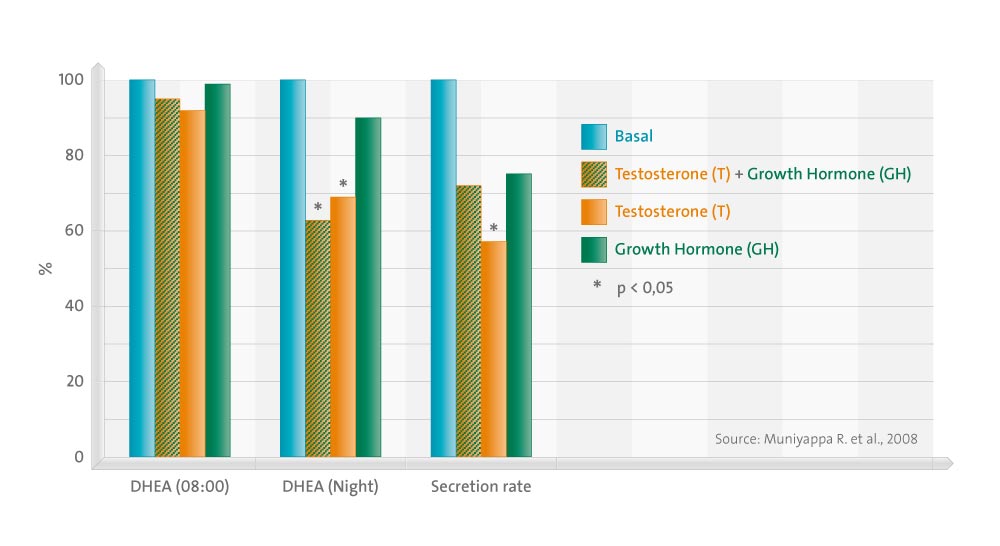Context
Aging is associated with diminished gonadal steroid and GH/IGF-I axis activity; whether these changes contribute to the parallel declines of dehydroepiandrosterone (DHEA) and DHEA sulfate (DHEAS) production is unknown, as are the effects of sex steroid and/or GH administration on DHEA and DHEAS production.
Objective
Our objective was to evaluate morning DHEAS concentrations and nocturnal DHEA secretory dynamics in healthy older men and women, before and after chronic administration of sex steroid(s) alone, GH alone, sex steroid(s) combined with GH, or placebo alone.
Design
We compared nocturnal DHEA secretory dynamics (2000 h to 0800 h, sampling every 20 min, analyzed by multiparameter deconvolution and approximate entropy algorithms) in healthy older (65–88 yr) men (n = 68) and women (n = 36), both before and after 26 wk of administration of sex steroid(s) alone [testosterone (T) in men or estrogen/progesterone in women], GH alone, sex steroid(s) combined with GH, or placebo alone.
Results
Morning concentrations of DHEAS were lower; nocturnal DHEA pulsatile production rate, burst frequency, and amplitude were higher; and half-life was shorter in women (P<0.05). Nocturnal integrated DHEA concentrations, total production rate, and approximate entropy did not differ significantly by sex. Because of small treatment group sizes in women, only hormone intervention results in men are presented. In men, T and T plus GH administration significantly decreased nocturnal integrated DHEA but not morning DHEAS concentrations. GH alone exerted no significant effects on nocturnal DHEA secretion or morning DHEAS.
Conclusions
Spontaneous nocturnal DHEA secretion is sexually dimorphic in healthy older individuals, and T administration decreases nocturnal DHEA secretion in older men. The clinical significance of sex steroid modulation of DHEA secretion in older persons remains to be elucidated.
